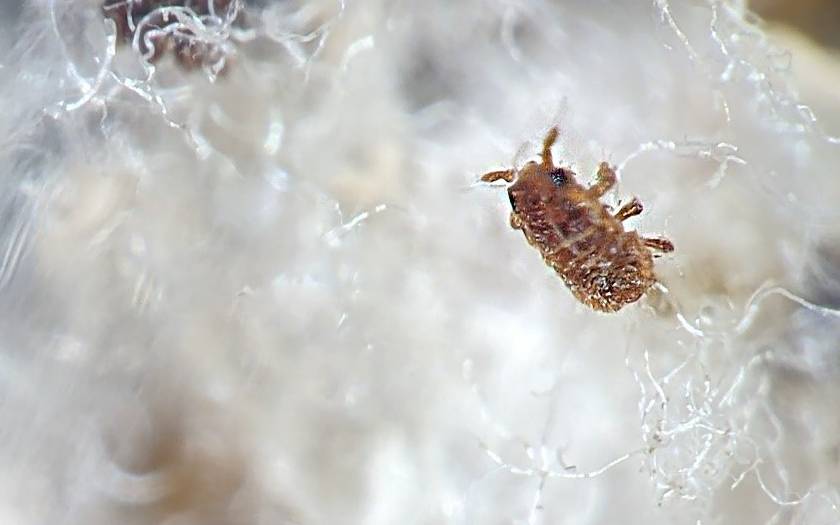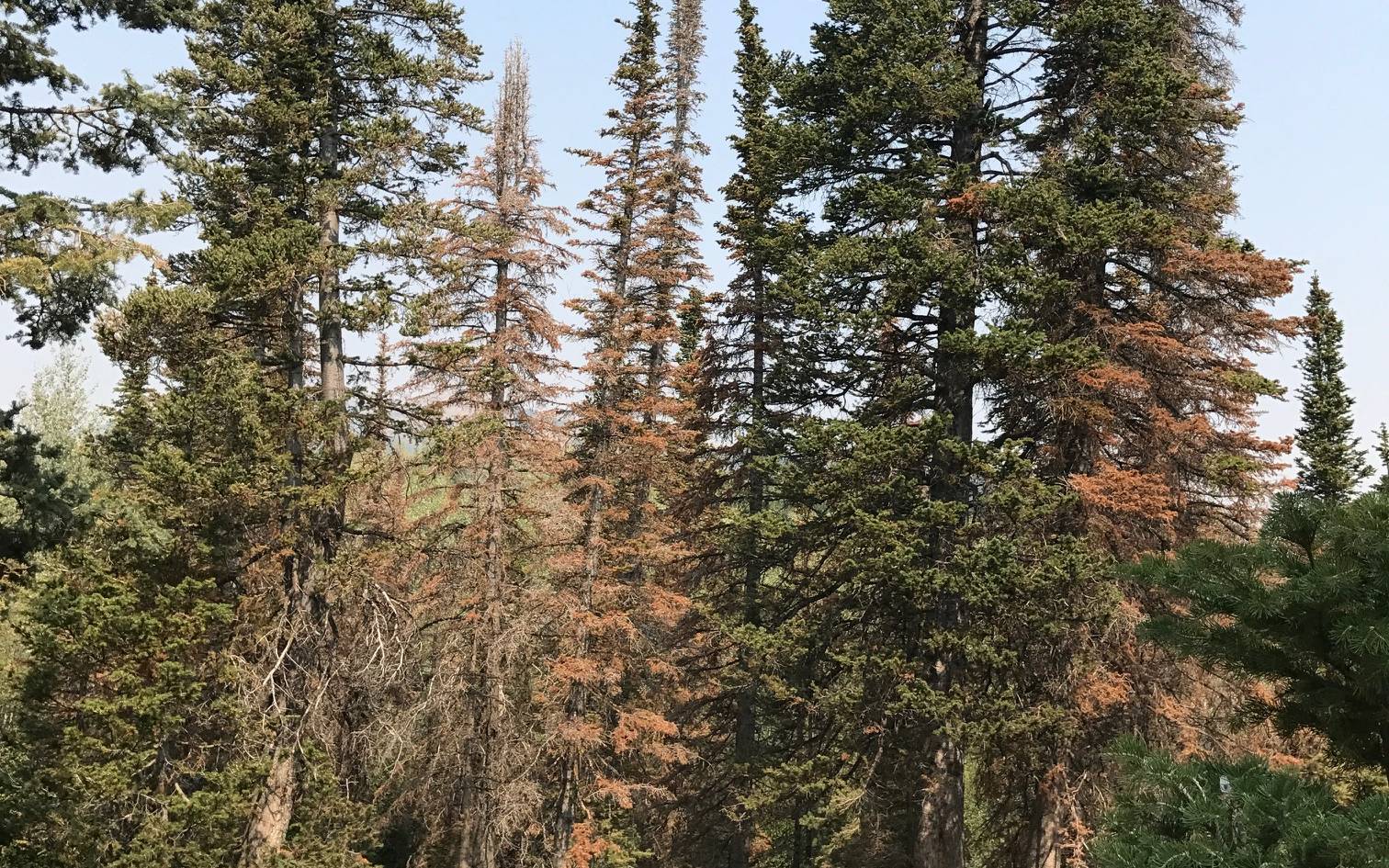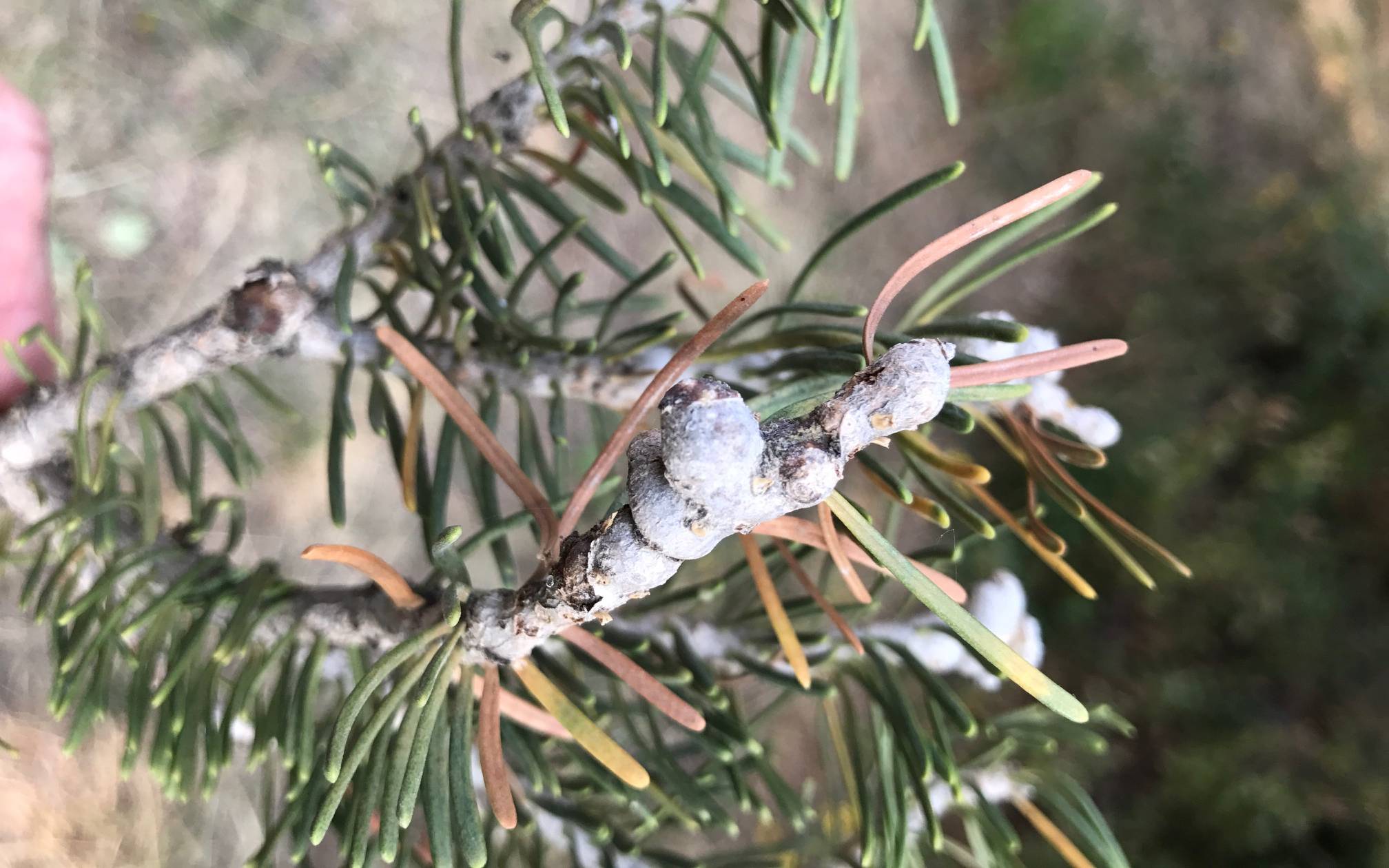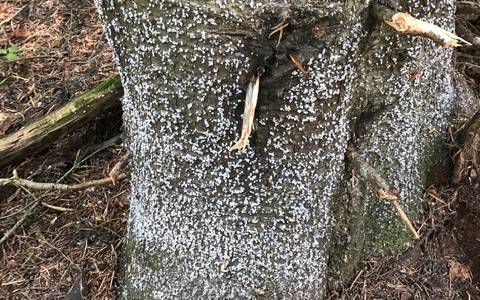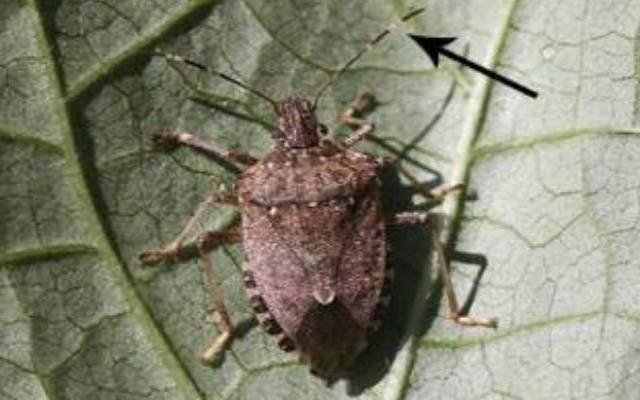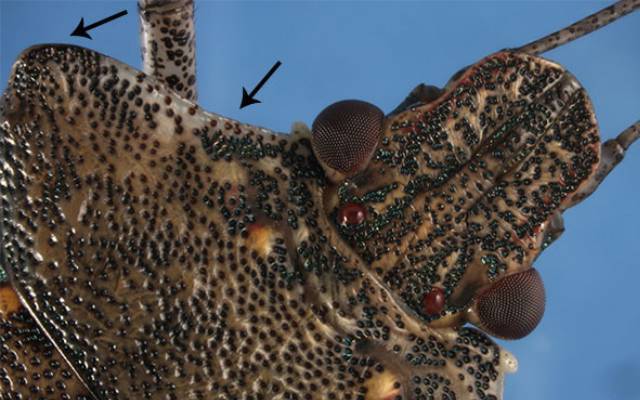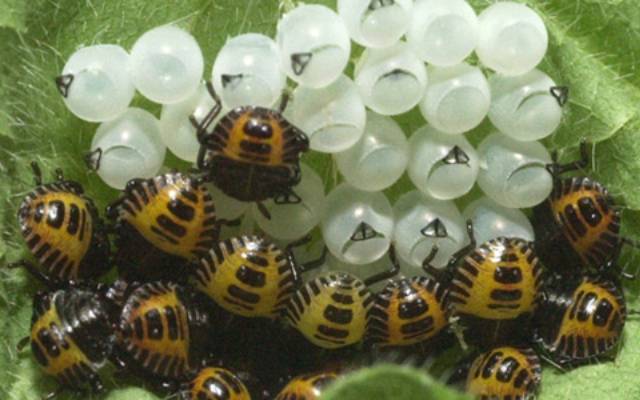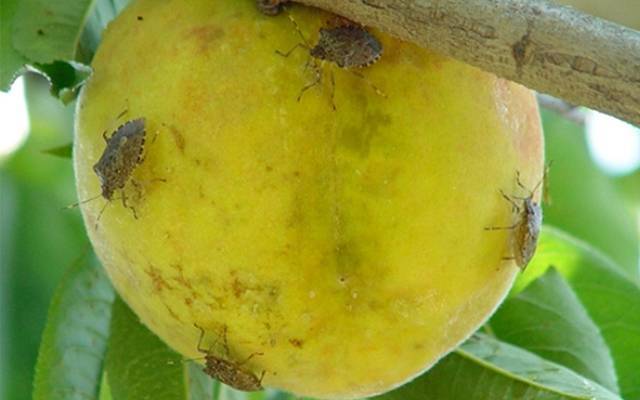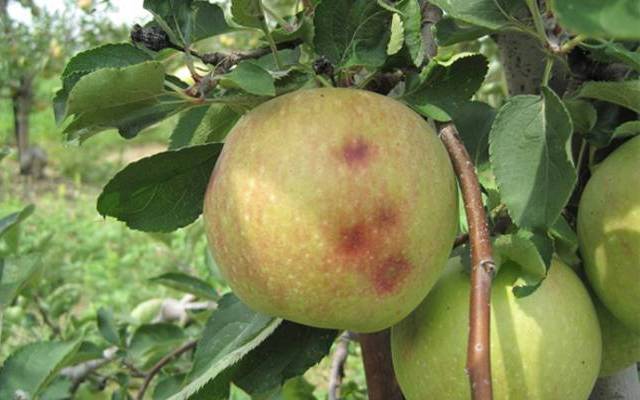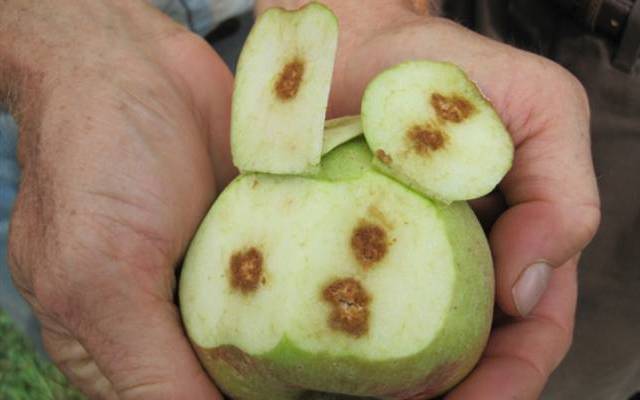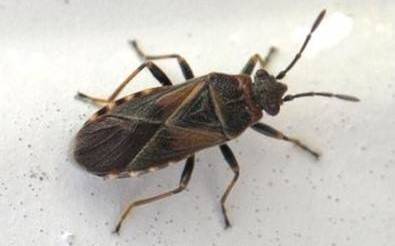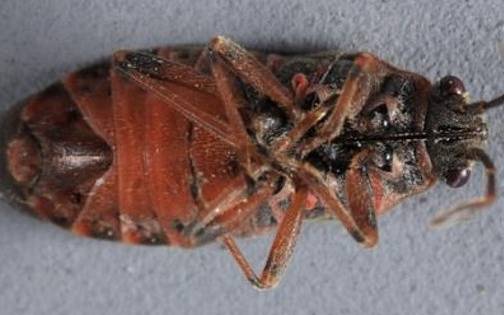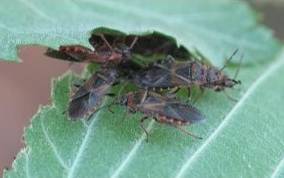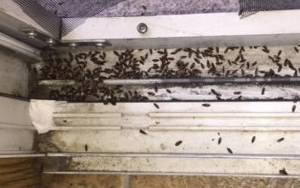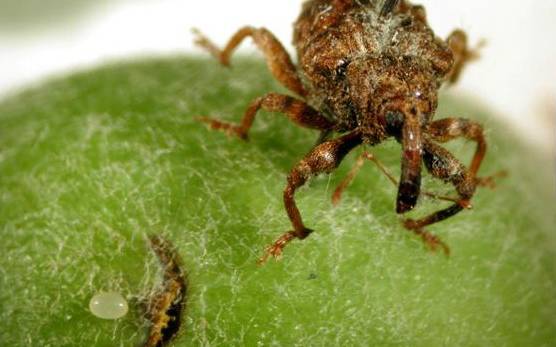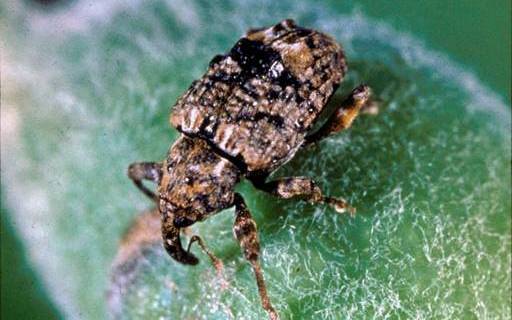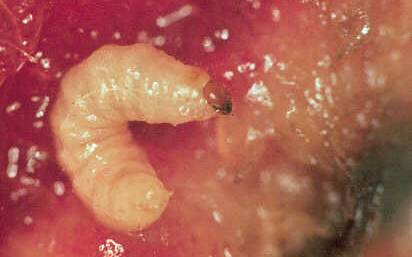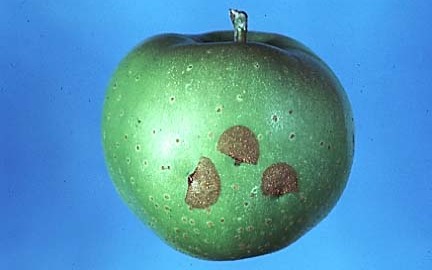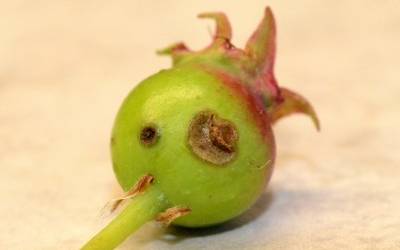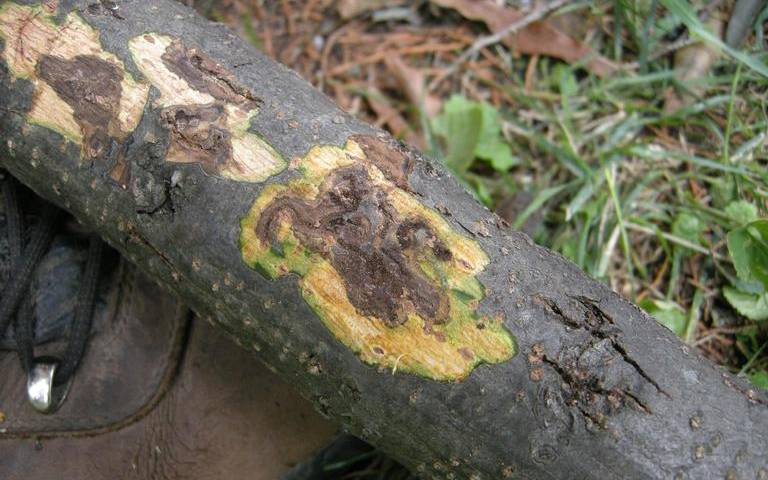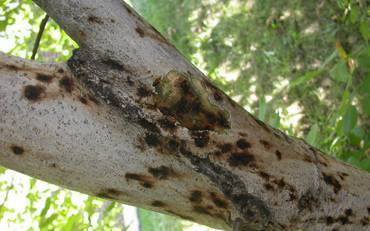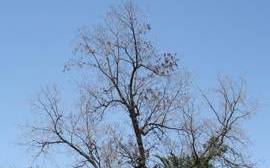Invasive Pests
Top 5 Newly Established Invasive Pests
This page lists non-native pests in alphabetical order that have established in Utah and continue to harm the state's economy and/or environment. These are pests that are important to be aware of and manage for, but are not necessary to report as invasives.
Balsm Woolly Adelgid
Invasion
The balsam woolly adelgid (BWA) is a tiny sap-sucking insect that was introduced to North America from Europe. In the U.S., it is a pest of true firs along both U.S. coasts and in several Interior West states, where it impacts the health of firs in forested habitats, Christmas tree production, and potentially urban areas. The USDA Forest Service Forest Health Protection team in Ogden first detected and confirmed BWA in 2017 in Farmington Canyon and near Powder Mountain Ski Resort. It is now confirmed in Box Elder, Cache, Rich, Weber, Morgan, Davis, Summit, Salt Lake, Wasatch, and Utah counties.
Description
BWA are hard to detect and identify due to their small size. All life stages require magnification to see. Infestations are often only noticed once a population has grown dense enough to form visible masses of wool on the tree bole or other injury symptoms. BWA population are most visible in the fall.
Damage
Subalpine fir is the main host of BWA in Utah. The tiny insects insert a long stylet into the bark and begin feeding. Symptoms can include branch flagging, canopy decline, loss of apical dominance, and gouting (abnormal swelling or branch nodes and buds). Host responses to BWA feeding eventually cause decreased water flow to the crown, leading to drought-like symptoms and eventual tree death. Tree mortality typically occurs within 2-10 years of infestation, but heavy infestations can kill trees in 2-3 years.
Learn More
Brown Marmorated Stink Bug
Invasion
Brown marmorated stink bug (BMSB) is both a major pest of many agricultural crops and a nuisance pest for homeowners. This Asian native currently occurs in more than 47 U.S. states. It was first detected in Utah in 2012, and has been found in Box Elder, Cache, Carbon, Davis, Kane, Salt Lake, Utah, and Weber counties as of November 2023.
Description
Adults are shield-shaped, about 1/2 inch long and wide with smooth, rounded shoulders, and have a distinct light and dark banding pattern on antennae, legs, and the posterior edge of the back. Newly hatched nymphs have yellow-red backs with black stripes, and darken with age.
Damage
BMSB feeds on vegetation and fruits of a broad range of plants; fruits and vegetables are especially vulnerable to this pest. Common feeding damage symptoms include dimples, pits, discoloration, and softening of fruits, "cat facing", and corklike tissue. BMSB is not directly harmful to people, pets, or buildings.
Learn More
Elm Seed Bug
Invasion
Elm seed bug is Utah's newest nuisance pest. In July 2014, the Utah Plant Pest Diagnostic Lab and USDA APHIS confirmed the first reported occurrence of this Europe native. It has since been found in Idaho, Oregon, Washington, and British Columbia, Canada. Elm seed bug is now widely distributed along the Wasatch front and Cache County, with reports west to Duchesne County, east to Tooele County, and south to Grand County.
Description
Adults look similar to boxelder bugs but are about 1/3 of the size. They are about 1/4 inch long with dark rusty-red and black coloration. On the back, there is a black triangle set inside two rusty-red triangles. Wings are held crossed over the back.
Nymphs have a dark black head, pronotum, and wing pads, while the abdomen is red.
Damage
Elm seed bugs, true to their name, feed on elm seeds. However, they are mainly considered a nuisance pest. They can be found in large aggregations in and on buildings. Their small body size allows them to enter through small gaps in weather stripping and window screens. Elm seed bugs found indoors are often undesirable and if crushed or mishandled can give off a foul odor. They may also stain lightly colored materials with fecal material.
Learn More
Plum Curculio
Invasion
Plum curculio was detected in Box Elder County, Utah, in the early 1980s, and this population remains the only known infestation in western North America where it is occasionally found in residential and wild fruit trees. Plum curculio is a quarantine pest in western North America (U.S. and Canada) and fruit grown in infested counties is restricted from being exported. Thus, it is a threat to Utah’s fruit industry and requires ongoing monitoring and management to keep Utah’s fruit export markets open.
Description
Plum curculio adults are 1/4-inch long with a brown to black body overlaid with light gray and brown markings along a rough back. They are recognized as a weevil by a long, slightly curved snout. A female plum curculio will chew a small cavity under the fruit skin and deposit a small, white, oval egg into the cavity. Eggs hatch into legless, gray-white grubs (larvae) that have curved bodies and small brown heads. Larvae develop within fruit flesh.
Damage
Plum curculio has a fairly wide host range within the Rosaceae family, with wild plums being the most preferred in Box Elder County, Utah. Adults feed on fruit by chewing small, round holes and early-season feeding causes fruit to be deformed at harvest. Adults also indirectly damage fruits through oviposition (egg-laying). These scars have a characteristic crescent shape with slits about 1/4 inch long and will form a noticeably darkened scab on the fruit surface. Larvae cause damage by tunneling within the fruit flesh, making it unfit for consumption.
Learn More
- USU Extension Fact Sheet: Plum Curculio
- Invasive Fruit Pest Guide for Utah
- Plum Curculio Pamphlet
Walnut Twig Beetle & Thousand Cankers Disease
Invasion
Thousand cankers is a newly recognized disease of
walnuts, caused by a fungus that is spread by the walnut twig beetle. The beetle is endemic to the native range of Arizona walnut (Arizona, New Mexico, and Chihuahua, Mexico), and was first identified in Utah in 1988. Widespread mortality of black walnut in the early 2000s in Colorado and Utah led to the discovery of the pathogen-vector complex. Walnut mortality is now occuring in California, Oregon, Washington, Idaho, and Colorado. Thousand cankers diseases has also been detected in Pennsylvania, Virginia, and North Carolina.
Description
Walnut twig beetles are reddish-brown beetles about the size of a grain of rice. Identification can be difficult due to its small size and many similar looking bark beetles. Larvae are white grubs with a brown head capsule and no legs. The bark will have dark stains at the tiny exit holes caused by the twig beetle.
Damage
The fungus kills black walnut, English walnut, and hybrids of both. Trees often die within 3 years of visible symptoms. The main threat is walnut production areas and native walnut habitat. Symptoms begin as areas of wilting and yellowing foliage and thinning tree crown. As the disease progresses, larger branches die, and eventually full tree mortality occurs.




